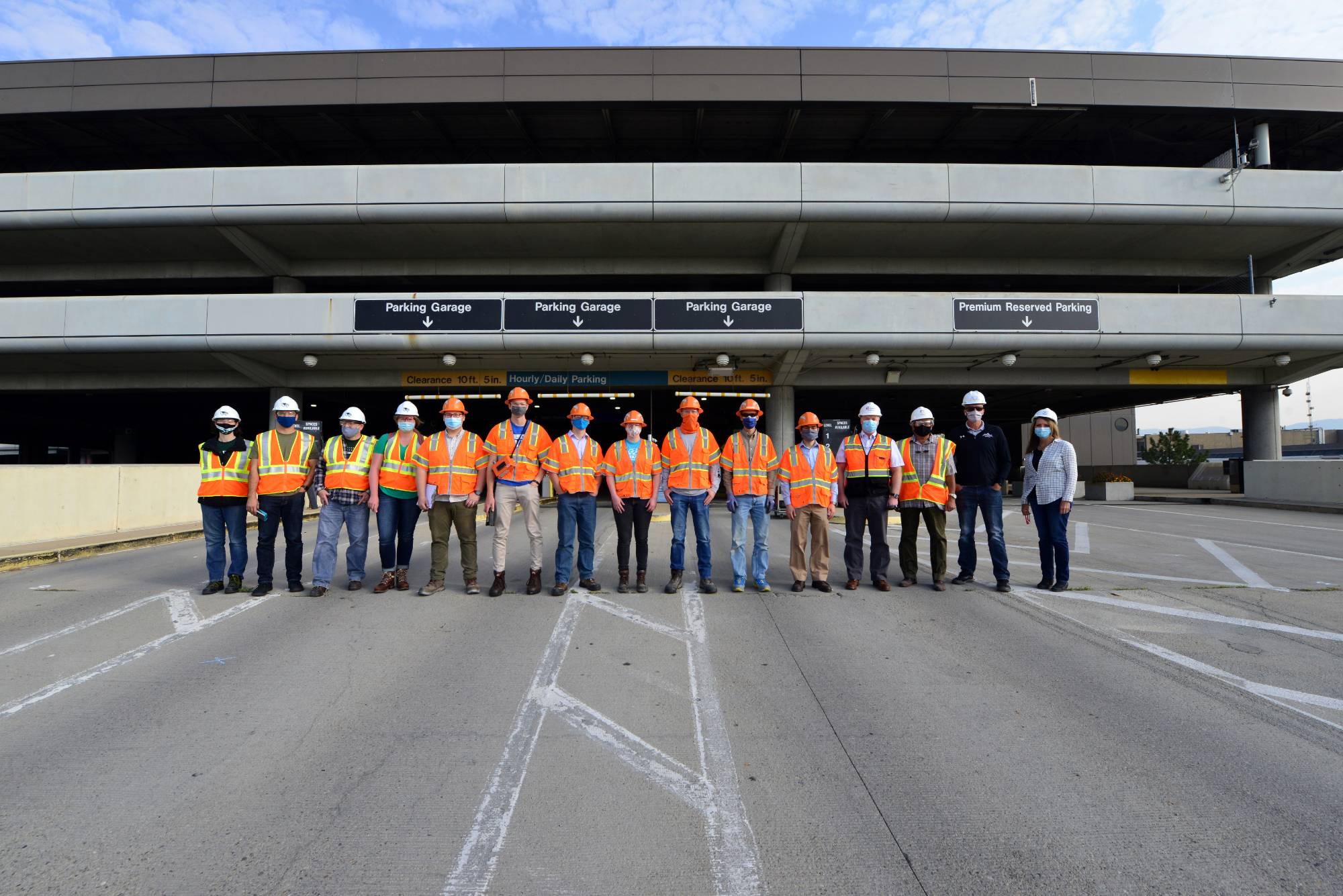

Utah Valley University Civil Engineering Professor, Amanda Bordelon is part of a research initiative to investigate the unique concrete material utilized in the former Salt Lake Airport parking garage. With the opening of the new Salt Lake Airport in September 2020, this unique original parking structure was scheduled to be demolished. Before the demolition began, however, Bordelon and a team of civil engineers have been funded by the ACI (American Concrete Institute) International Foundation and Utah Department of Transportation to conduct research. The intent of the research is to determine the effectiveness of a micro-silica mixed within the concrete to prevent it from corroding over time.
Designed in 1989, the parking structure was originally intended to last 75 years and featured epoxy-coated reinforcing bars, post-tensioned cables, and a concrete mixture using micro-silica. The silica powder was a new technology at the time of the construction, and is well documented since to form a harder, stronger, denser concrete, and that is less permeable by water or other corrosive elements over time. The drawbacks to using this mixture is that it is more expensive to produce and creates a stickier more difficult to finish concrete mixture.
“Adoption of silica fume in the industry has been slow,” Bordelon said. “It is expensive, and it makes the concrete mix rather sticky and hard to work with. The payoff for using it therefore needs to be verified.”
While these drawbacks may have contributed to the slow uptake of silica in the industry, this research may prove that the expense and difficulty to work with it are outweighed by other properties that the silica fume concrete offers.
“If silica fume is found to substantially improve the service life of a structure, however, these additional up-front costs may be worthwhile,” Bordelon said.
The research team began their work onsite with a visually mapping the cracks and by taking samples of the concrete for testing. One sampling method is to strategically drill down into the concrete about an inch at a time. With each one inch lift, the team collected samples of the dust from the drilling. The dust powder is taken to a lab and chemically tested to determine the amount of chloride ions present. Chloride ions are introduced into the concrete from the salting of the roadways leading around and ramping up to the parking garage. Chloride is one of the most aggressive corrosion elements to the steel reinforcement.
Once the research is complete it will be used as a guide for future engineering design and the results will be used to inform Life-365 software – used to predict the lifespan, corrosion patterns, and anticipated repair date of future newly-constructed concrete structures.
This is a collaborative project among UVU Civil Engineering Program and several research team members from Civil and Electrical Engineering Departments at Brigham Young University, where much of material testing is conducted.

